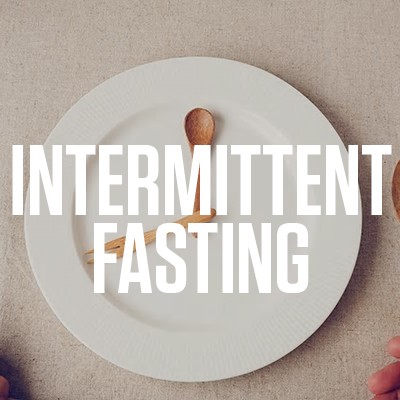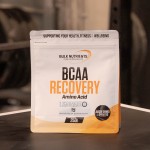Cardio for fat loss: Fasted or fed?

What is fasted cardio?
If you don’t already know, fasted cardio refers to exercising on an empty stomach i.e. in a fasted state.
It has roots in bro science, but a great deal of research has been conducted to find out whether exercising on an empty stomach really makes a difference when it comes to burning fat.
It’s a pretty heavily debated subject, with many people sitting on one side of the fence or the other. So, we were pretty interested to see what researchers discovered when they put it to a real-life test.

Previous studies
In the past, researchers found that doing moderate-intensity exercise whilst in a fasted state does boost 24-hour fat oxidation. However, the subjects tested were male in nearly all studies on the topic.
It’s easy to guess that results would be similar in both men and women, but that’s just not the case as men burn and store fat differently. On average women burn more fat than men during exercise whereas men burn more fat after exercise. Plus research shows men and women’s skeletal muscle adapts differently to endurance training which influences how fat is used as fuel.
The new study
What is unique about the latest research is that it specifically looks at how fasted cardio affects females.
This study built on previous research from 1985, 2013 and 2015, this time testing women and seeing what impact fasted cardio has on fat metabolism.
Nine healthy, young women with normal BMI’s were assigned to two conditions in a metabolic chamber for a day: one where they did moderate aerobic exercise before breakfast for an hour and one where they were at rest.
What did they find?
In a nutshell, they found that exercise performed in a fasted state boosted fat metabolism in the female subjects for 24 hours.
However, it’s important to note that the exercise that saw these results was of moderate intensity. This is notable due to the concept of the “fat burning zone” which occurs most commonly during moderate-intensity exercise. When the body is in this “fat-burning zone” it uses more fat relative to glucose/carbohydrates to fuel the body.
This study found that fat oxidation was higher when moderate-intensity exercise was performed, especially since the body’s glycogen stores are reduced when fasted, this allows fat to be more readily used as fuel.
So what this study uncovered is that fat oxidation was increased for 24 hours after fasted cardio activity, this was not the case for research conducted on those in a fed state.

Beyond this study
Should we all jump on the fasted cardio bandwagon then? Perhaps. It really comes down to a personal preference, you might prefer to do fasted cardio or perhaps you find semi fasted cardio does the job.
While fasted cardio may have some benefits, semi fasted cardio is also a top choice.
Fasted cardio may help you burn more calories over the course of the day, but energy levels are lowered due to having an empty stomach and therefore you have depleted glycogen levels. For some people, they prefer to have a protein shake or some branched chain amino acids (BCAAS) before cardio so they aren’t running on low, not just in terms of energy levels, but also amino acids levels.
Having a source of protein before or during a cardio session is useful as it provides the body with a supply of amino acids, which help you to stay anabolic and therefore prevents the breakdown of muscle (it’ll also help with recovery).
Taking BCAAs would be especially useful for high impact cardio such as HIIT or Tabata where there’s more pressure placed on the body. That’s also where a pre workout supplement like our Pre Workout 101 comes in handy for a boost in energy!
But really, the key to fat loss is burning more energy than you consume.
What's the deal with cardio? Do we burn actual body fat?

A sure-fire way to lose weight
Two words, caloric deficit.
If you consume fewer calories than your body needs in a single day, your body will start using stored fat for energy and you’ll lose weight. That’s how it works.
So, while the long term effects of fasted vs fed cardio are yet to be discovered, exercise while in a caloric deficit state has produced promising results. One study found that most women lost weight in a caloric deficit state, regardless of whether they exercised while fed or fasted.
So, don’t forget that nutrition is also an important part of any weight loss journey!
Motivated? Check out our weight loss range and see how we can support you on your journey to success.

Ellie’s an absolute copywriting boss from Hobart, Tasmania!
She's an amateur powerlifter who's crushed it in several competitions, and she's got all the keto knowledge to keep her fuelled up for her workouts.
One thing you'll always find in Ellie's pantry is a jar of peanut butter - she's obsessed.
More about Ellie HearnReferences:
- Iwayama, K., Kawabuchi, R., Nabekura, Y., Kurihara, R., Park, I., Kobayashi, M., Ogata, H., Kayaba, M., Omi, N., Satoh, M. and Tokuyama, K., 2017. Exercise before breakfast increases 24-h fat oxidation in female subjects. PLOS ONE, [online] 12(7). Available at: Exercise before breakfast increases 24-h fat oxidation in female subjects.
- Iwayama, K., Kawabuchi, R., Park, I., Kurihara, R., Kobayashi, M., Hibi, M., Oishi, S., Yasunaga, K., Ogata, H., Nabekura, Y. and Tokuyama, K., 2015. Transient energy deficit induced by exercise increases 24-h fat oxidation in young trained men. Journal of Applied Physiology, [online] 118(1), pp.80-85. Available at: Transient energy deficit induced by exercise increases 24-h fat oxidation in young trained men..
- Iwayama, K., Kurihara, R., Nabekura, Y., Kawabuchi, R., Park, I., Kobayashi, M., Ogata, H., Kayaba, M., Satoh, M. and Tokuyama, K., 2015. Exercise Increases 24-h Fat Oxidation Only When It Is Performed Before Breakfast. EBioMedicine, [online] 2(12), pp.2003-2009. Available at: Exercise Increases 24-h Fat Oxidation Only When It Is Performed Before Breakfast.
- Romijn, J., Coyle, E., Sidossis, L., Rosenblatt, J. and Wolfe, R., 2000. Substrate metabolism during different exercise intensities in endurance-trained women. Journal of Applied Physiology, [online] 88(5), pp.1707-1714. Available at: Substrate metabolism during different exercise intensities in endurance-trained women.
- Schoenfeld, B., Aragon, A., Wilborn, C., Krieger, J. and Sonmez, G., 2014. Body composition changes associated with fasted versus non-fasted aerobic exercise. Journal of the International Society of Sports Nutrition, [online] 11(1). Available at: Body composition changes associated with fasted versus non-fasted aerobic exercise.
- Shimada, K., Yamamoto, Y., Iwayama, K., Nakamura, K., Yamaguchi, S., Hibi, M., Nabekura, Y. and Tokuyama, K., 2013. Effects of post-absorptive and postprandial exercise on 24h fat oxidation. Metabolism, [online] 62(6), pp.793-800. Available at: Effects of post-absorptive and postprandial exercise on 24h fat oxidation.
Related Blogs

Steady-State vs HIIT Cardio for Weight Loss
Posted by Bulk Nutrients
Estimated reading time: 5 minutes

Will Intermittent Fasting Help Me Lose More Weight?
Posted by Dayne Hudson
Estimated reading time: 6 minutes

Intermittent fasting: What's it all about?
Posted by Ellie Hearn
Estimated reading time: 5 minutes





























